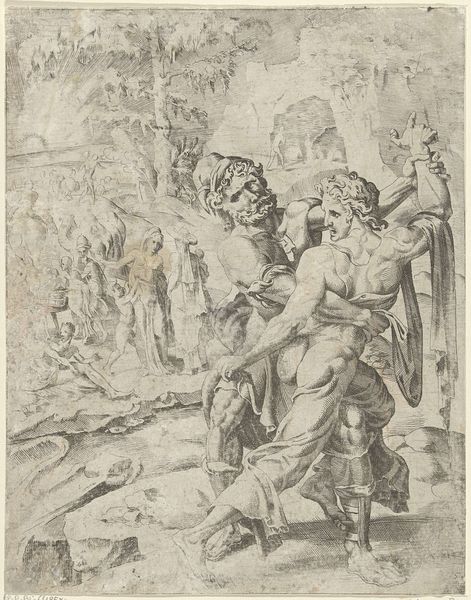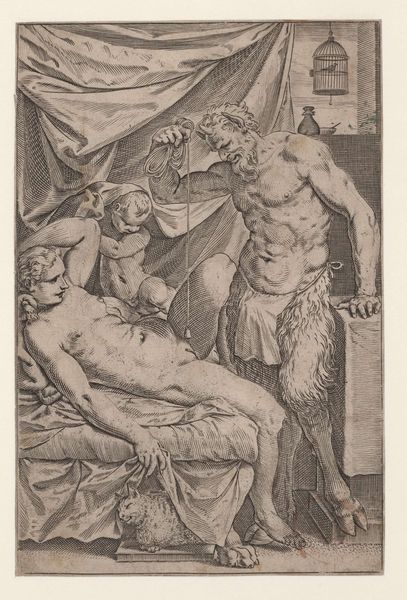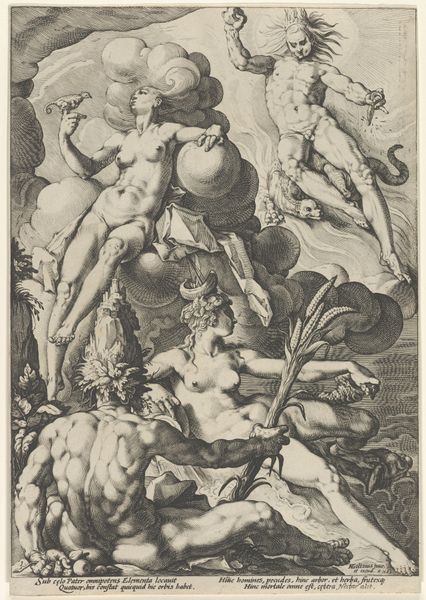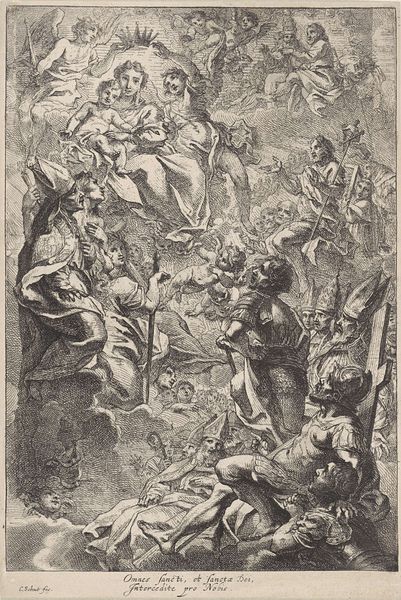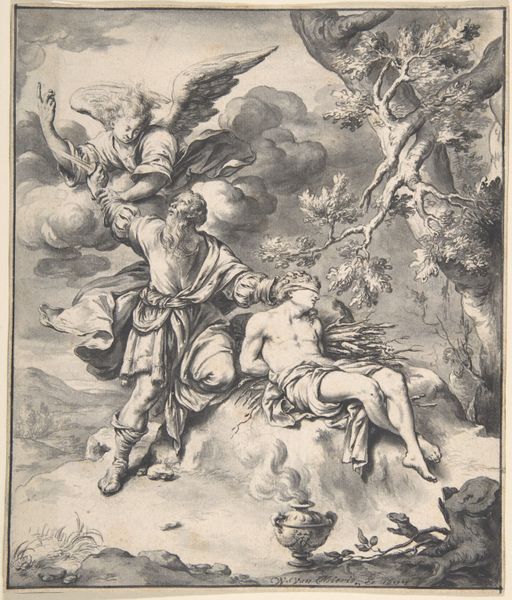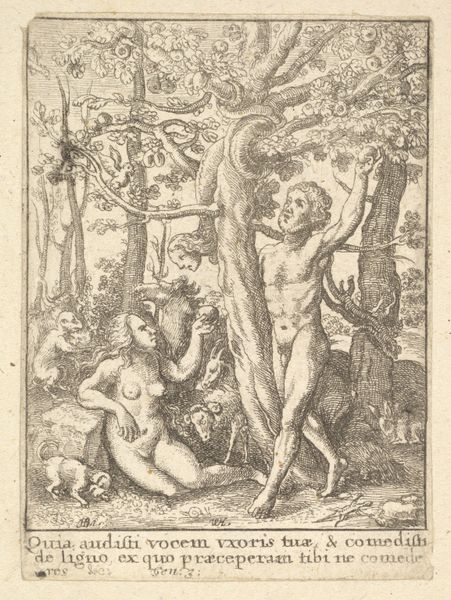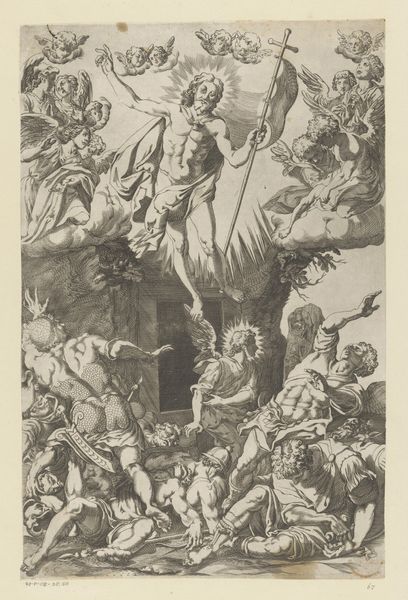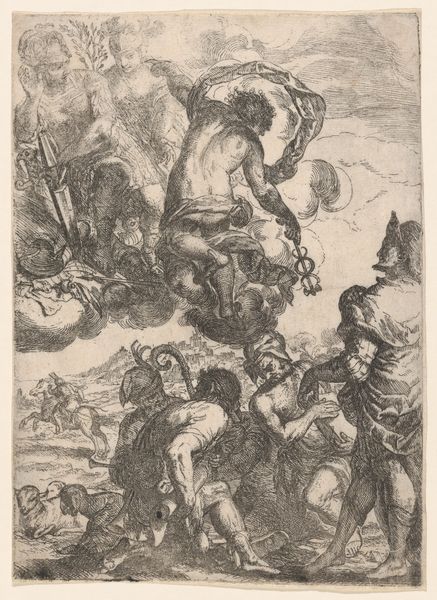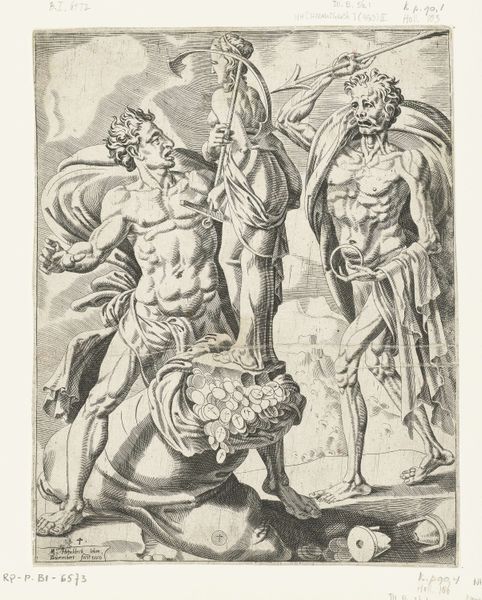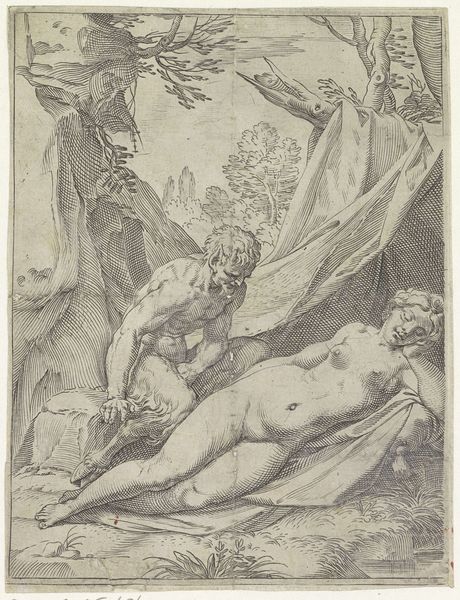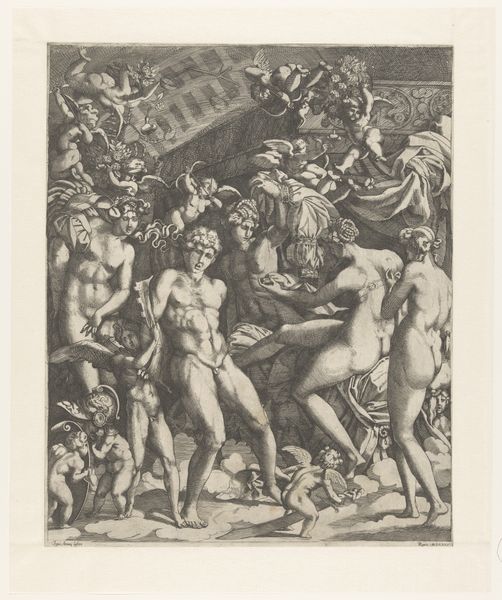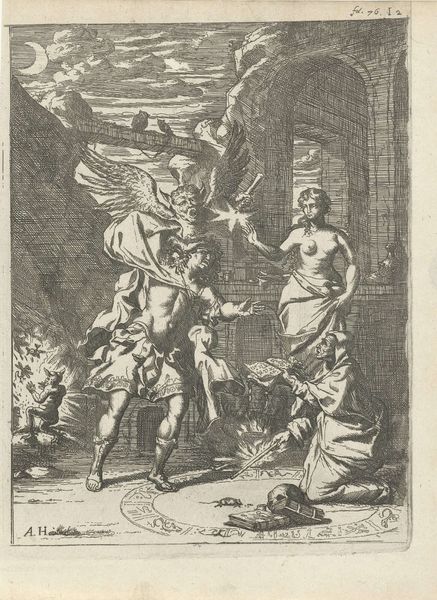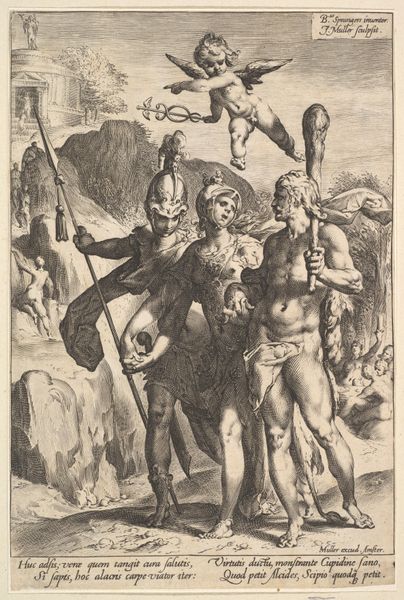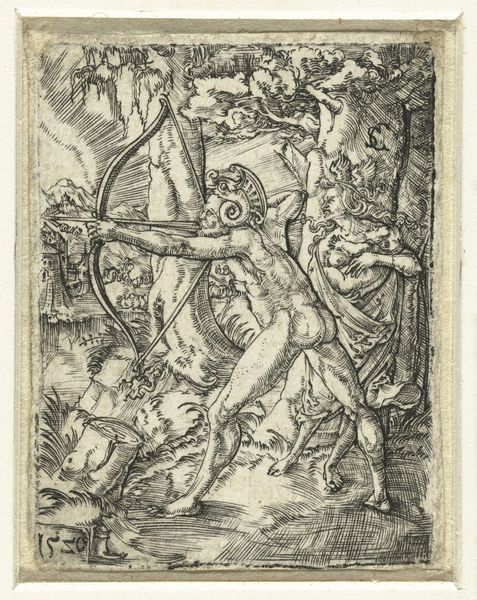
print, intaglio, engraving
#
allegory
# print
#
intaglio
#
mannerism
#
figuration
#
line
#
history-painting
#
italian-renaissance
#
engraving
Dimensions: height 221 mm, width 182 mm
Copyright: Rijks Museum: Open Domain
Editor: Here we have Giovanni Jacopo Caraglio’s "Hercules fighting the Hydra of Lerna," an engraving made sometime between 1515 and 1565. It's packed with figures, this really intense combat. It’s interesting how such a violent scene can be portrayed with such delicate lines. How do you read this image? Curator: This piece really throws us into the complexities of power and its representation in the Renaissance. Hercules’s labors were often used allegorically to represent a ruler's triumph over adversity. I’m curious, what does Hercules slaying the Hydra mean in a time rife with social and political upheaval? Do you see any commentary on justice or the abuse of authority here? Editor: It makes you wonder if it was maybe more than just a depiction of the myth. I guess, considering when it was made, those in power likely faced various internal "Hydras"–uprisings and conflicts. Curator: Precisely! The Hydra, with its multiple heads, could be seen as representative of multiple internal threats that any leader would want to destroy in order to secure power. Caraglio places the viewer right in the center, forcing us to consider where our allegiances lie. Editor: The chaos and brutality is really the point here, right? That's a very intense but good message. Curator: Absolutely. And thinking about prints specifically – they democratized images and narratives. How might the accessibility of this print influenced the perception of Hercules, power, or even justice, among different social classes at the time? Editor: That makes sense! I had been focusing on the image itself, but the role of prints is so important to consider, especially at this time in history. Thanks for the new perspective!
Comments
No comments
Be the first to comment and join the conversation on the ultimate creative platform.
